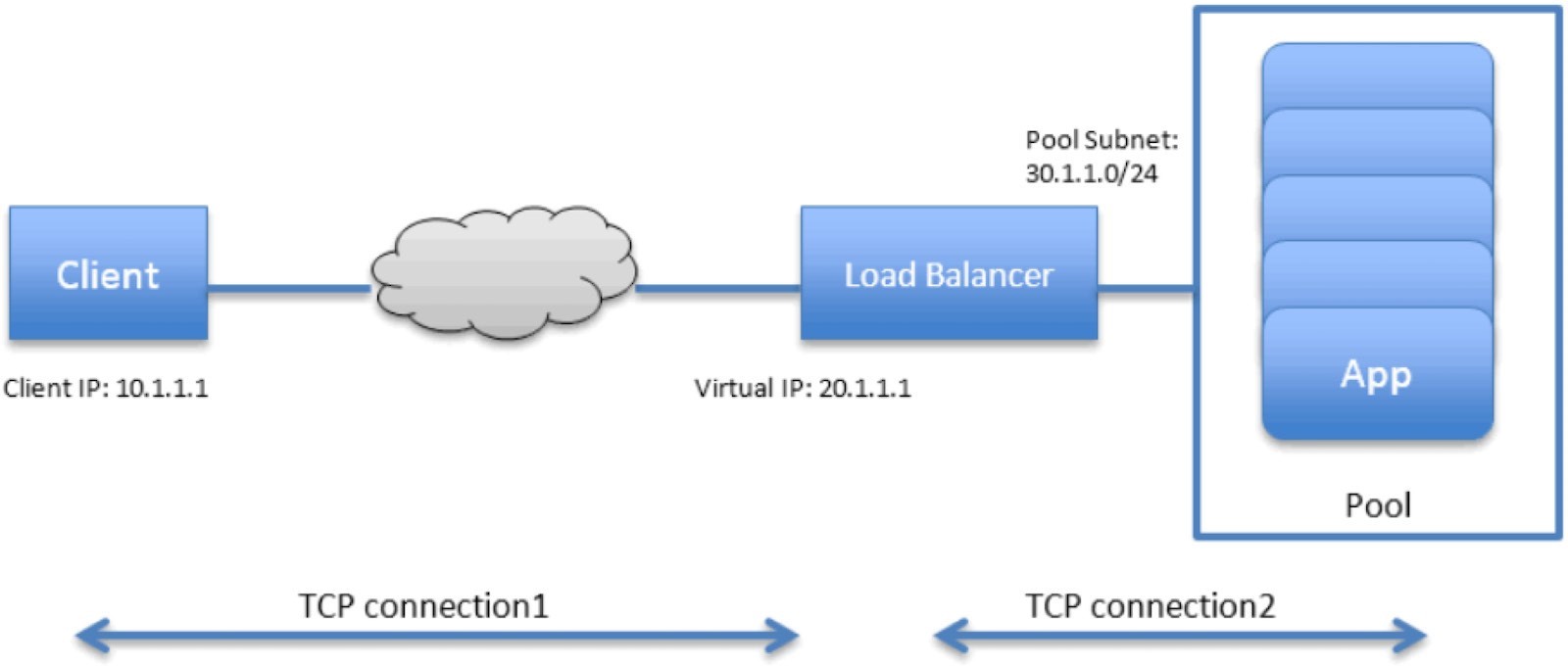Contrail Service
Chapter 3 introduced Kubernetes’ default implementation of service through kube-proxy. In Chapter 3 we mentioned that CNI providers can have their own implementations. Well, in Contrail, nodePort service is implemented by kube-proxy. However, clusterIP and loadbalancer services are implemented by Contrail’s loadbalancer (LB).
Before diving into the details of Kubernetes service in Contrail, let’s review the legacy OpenStack-based load balancer concept in Contrail.
For brevity, sometimes loadbalancer is also referred to as LB.
Contrail Openstack Load Balancer
Contrail load balancer is a foundation feature supported since its first release. It enables the creation of a pool of VMs serving applications, sharing one virtual-ip (VIP) as the front-end IP towards clients. Figure 1 illustrates Contrail load balancer and its components.

Some highlights of Figure 1 are:
The LB is created with an internal VIP 30.1.1.1. An LB listener is also created for each listening port.
Together, all back-end VMs compose a pool which is with subnet 30.1.1.0/24, the same as LB’s internal VIP.
Each back-end VM in the pool, also called a member, is allocated an IP from the pool subnet 30.1.1.0/24.
To expose the LB to the external world, it has allocated another VIP which is external VIP 20.1.1.1.
A client only sees one external VIP 20.1.1.1, representing the whole service.
When LB sees a request coming from the client, it does TCP connection proxying. That means it establishes the TCP connection with the client, extracts the client’s HTTP/HTTPS requests, creates a new TCP connection towards one of the back-end VMs from the pool, and sends the request in the new TCP connection.
When LB gets its response from the VM, it forwards the response to the client.
And when the client closes the connection to the LB, the LB may also close its connection with the back-end VM.
When the client closes its connection to the LB, the LB may or may not close its connection to the back-end VM. Depending on the performance, or other considerations, it may use a timeout before it tears down the session.
You can see that this load balancer model is very similar to the Kubernetes service concept:
VIP is the service IP.
backend VM becomes backend pods.
members are added by Kubernetes instead of OpenStack.
In fact, Contrail re-uses a good part of this model in its Kubernetes service implementation. To support service load balancing, Contrail extends the load balancer with a new driver. Along with the driver, service will be implemented as an equal cost multiple path (ECMP) load balancer working in Layer 4 (transport layer). This is the primary difference when compared with the proxy mode used by the OpenStack load balancer type.
Actually any load balancer can be integrated with Contrail via the Contrail component conrail-svc-monitor.
Each load balancer has a load balancer driver that is registered to Contrail with a loadbalancer_provider type.
The contrail-svc-monitor listens to Contrail loadbalancer, listener, pool, and member objects. It also calls the registered load balancer driver to do other necessary jobs based on the loadbalancer_provider type.
Contrail by default provides ECMP load balancer (loadbalancer_provider is native) and haproxy load balancer (loadbalancer_provider is opencontrail).
The OpenStack load balancer is using haproxy load balancer.
Ingress, on the other hand, is conceptually even closer to the OpenStack load balancer in the sense that both are Layer 7 (Application Layer) proxy-based. More about ingress will be discussed in later sections.
